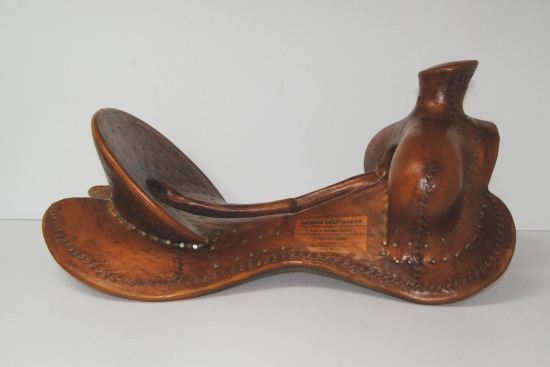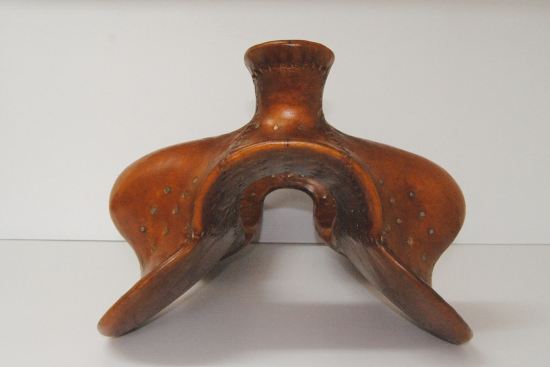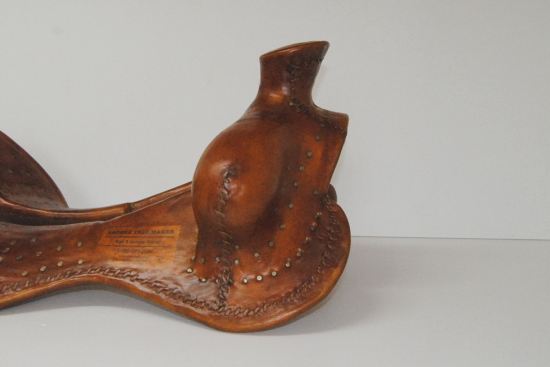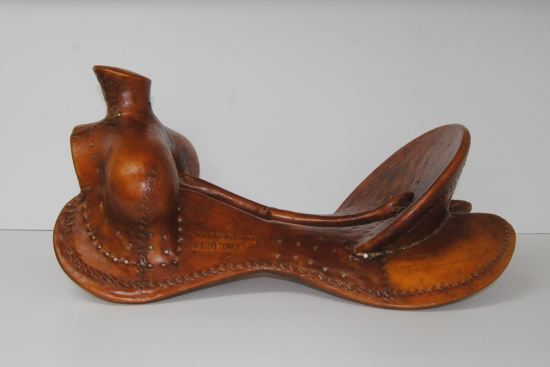Just a neat looking tree
We are no longer building saddle trees, but we have two videos about how Western saddles fit horses available on our westernsaddlefit.com website.

We shipped this tree out last week. The customer wanted things a little different - nothing really dramatic but mixing and matching some different factors involved in the look of a swell fork, and it turned out looking really nice.

This is a 14" wide Will James fork outline pattern with a wood post horn. I wrote another post about Will James forks back in April. Since then, we have built two more - both wood post horns. So now we have made more wood post Will James trees than metal horn Will James trees. And, following the trend, both of them also went to the US.

We usually bump the stock thickness (thickness of the wood of the fork back to front) on our wood post trees to 4 1/4" from the normal 3 3/4" we generally use on our metal horn swell forks to balance the look of the larger horn. But this customer wanted a bit more, so he went with 4 1/2" stock. With that much stock, we raised the top cut angle as well to avoid the lip looking like it is running too far down hill. (Our Avoiding the Withers page talks about top cut angle, stock thickness, and a few other things that affect the look and function of the fork.)

But the biggest difference was that he ordered 1" of back sweep as well. (This extra wood doesn't get counted in the stock thickness.) To add back sweep, we glue up the fork as normal, mark it out as normal and cut it out as normal. After that we take extra wood of the required thickness and glue the pieces to the back of the cut out fork. Then Rod goes to carving the shape needed, which depends on the fork shape, width and amount of back sweep ordered.
Spec wise, the horn on this tree was 3" tall with 3 1/4" cap at a 27 degree pitch. The gullet height was 7 3/4" and the fit was a 4 1/4" hand hole width with the bars set at 93 degrees. The cantle was 4 1/2" high, 12 1/2" wide at 37.5 degree angle (middle of the road) with 1 1/4" dish. Seat length was 15 1/2", which gave an 8 3/8" thigh length with the rest of the specs ordered.
As always, every tree is individually made and everything is adjustable, so just ask and we will work with you to make the tree the way you want it. (Disclaimer - unless we feel it will harm the horse. Then we will say explain why we think that and work with you to make changes as necessary.)
